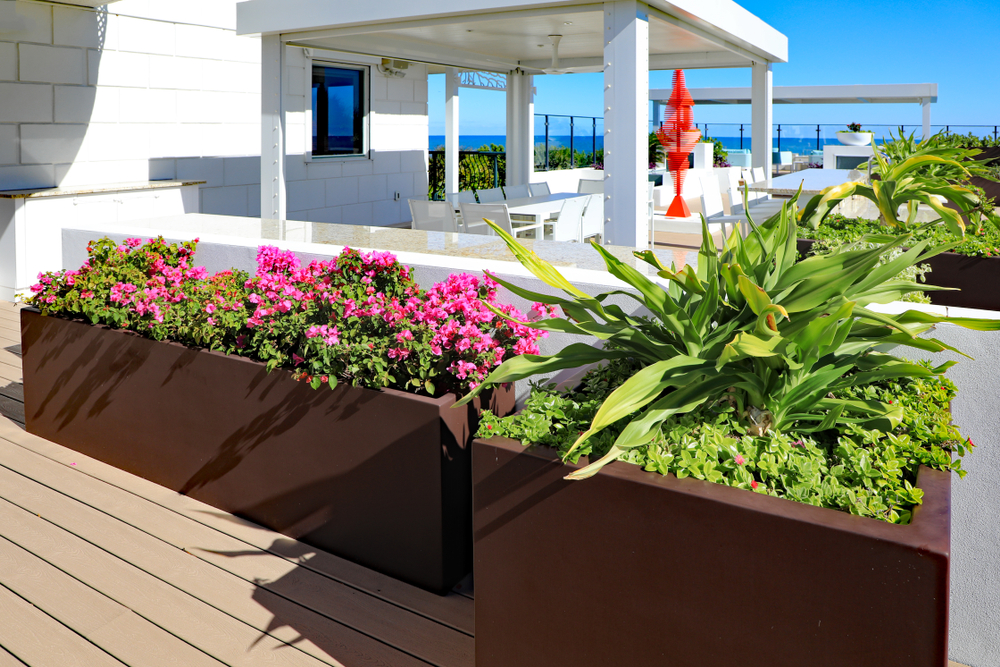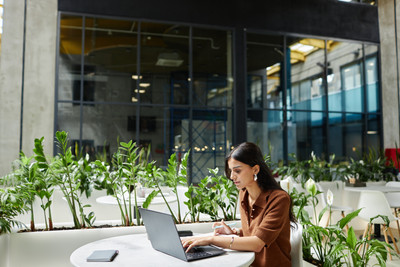Container Gardening: How to Plant Flowers in Pots Outdoors
Posted by Jason Wyrwicz on Aug 8th 2024

Are your hotel's balconies lacking that five-star appeal, or do you have a courtyard that's looking a little drab? Maybe you're unsure of how to draw attention to a doorway or protect your al fresco diners from a noisy road? Container gardening can help with all of these issues and more.
Outdoor potted plants draw the eye of customers and clients, transforming even the most uninspiring space into an attractive oasis — plus, you don't need those coveted green fingers for foliage in planters to flourish. Read on to discover everything you need to know about growing flowers in outdoor planters.
What Is the Best Material for Outdoor Planters?
Pots and planters come in many shapes, sizes, and materials, making finding the one that best fits your business a bit of a challenge. To simplify your decision-making process, keep in mind these important factors — the climate, your theme or brand, ease of maintenance, and budget. Below are the pros and cons for a few of the most common outdoor planter materials:
- Clay or terracotta. Although these pots develop a charming patina over time — ideal if you own a quaint trattoria or prefer a rustic aesthetic — they are easily broken and often get damaged by freezing and thawing during colder months.
- Concrete. These planters are solid and durable, making them great for high-traffic areas. However, their weight means they're not easy to move and aren't suitable for placing on decking or balconies.
- Wood. Packed with character, brilliant at withstanding the cold, and cheaper than other materials, the downside with wooden planters is they don't always last particularly long as they can soak up a lot of moisture, causing them to rot.
- Metal. Again, this material is very hardy and never gets chipped or cracked. However, as metal isn't porous, drainage can become a problem. These planters can also heat up rapidly, so they must be situated away from direct sunlight.
- Fiberglass. Fiberglass pots and planters are incredibly lightweight, relatively inexpensive, and available in many styles, including being molded to imitate other materials like stone or aluminum. Avoid those that feel thin and stiff as they can become brittle with cold or age. You will need to clean each planter at least twice a year with a non-abrasive cloth to maintain quality and color.
When deciding the depth of a planter — especially if you're growing a variety of species — it's best to go big as this allows enough space for all of your plants' root systems to spread. Simply add a layer of gravel or styrofoam at the bottom if you want to reduce the amount of potting soil needed.
What Are the Best Plants for Outdoor Pots?
From short-term bedding displays of seasonally blooming buds to permanent features of trees, shrubs, and topiary, plants in outdoor pots provide instant and easily adaptable results and add another dimension to a business's exterior landscaping. And why stop at flowers? Basil, chives, thyme, and other herbs, as well as vegetables like rocket, tomatoes, and broad beans, grow happily in pots, so you can wow your customers with fresh produce even if you're in the city.
When picking outdoor plants, deciding between annuals and perennials can be another cause for concern. Annuals only live for one season and need replacing each spring, but choose them if you want consistent color all summer long and enjoy experimenting with different foliage without a long-term commitment. Their counterpart, perennials, resprout each spring and can survive for two or more years. However, they bloom for just a few weeks and have extensive root systems that require generously sized containers.
For the best of both worlds, be brave and mix various species in one planter — do read their labels or speak to a nursery to check they all need a similar amount of light and moisture. When arranging plants, a good rule of thumb is to start by selecting one that will be the focal point, such as the brightly-hued petals of geraniums or African daisies. Next, add a few that artfully tumble over the edge of the container, like sweet alyssum, nasturtiums, or creeping wire vine. Lastly, dot about begonias, dusty miller, coleus, or similar plants with smaller flowers and leaves to add mass and give your planter a bountiful look.
To learn more about picking the perfect outdoors planters for your business, contact us on (888) 381-9501 or email us at sales@potsplantersandmore.com, and one of our experts will be happy to assist.



